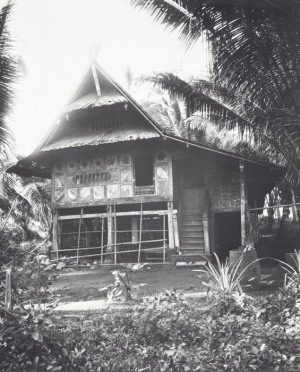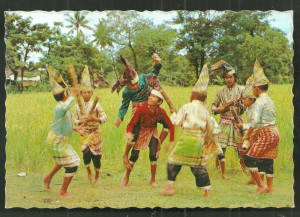(Boylove Documentary Sourcebook) - The "Masri" Dancing Boys of the Makassarese People of Southern Sulawesi: Difference between revisions
Dandelion moved page (BLSB) - The "Masri" Dancing Boys of the Makassarese of Southern Sulawesi to (BLSB) - The "Masri" Dancing Boys of the Makassarese of Southern Celebes |
m Dandelion moved page (Boylove Documentary Sourcebook) - The "Masri" Dancing Boys of the Makassarese of Southern Sulawesi to (Boylove Documentary Sourcebook) - The "Masri" Dancing Boys of the Makassarese People of Southern Sulawesi without leaving a redirect |
||
| (17 intermediate revisions by the same user not shown) | |||
| Line 1: | Line 1: | ||
# | [[File:COLLECTIE TROPENMUSEUM De voorgevel van een Makassaars huis in Makassar. TMnr 60041778.jpg|thumb|center|The facade of a Makassarese house in Makassar (circa 1920). Celebes (Sulawesi), Dutch East Indies ([[Indonesia]]). Tropenmuseum–Collectie Stichting Nationaal Museum van Wereldculturen, Amsterdam.]] | ||
From "Transvestitism and the Religious Hermaphrodite in Indonesia" (1954) by Justus M. van der Kroef, in <i>Asian [[Homosexuality]]</i>, edited by Wayne R. Dynes and Stephen Donaldson, <i>Studies in Homosexuality</i> (New York; London: Garland Publishing, 1992). Footnote omitted. | |||
<div style="margin:.5em auto; width:95%; min-height:5em; background-color:#F5FAFF; border:3px solid #c9c9ff; padding:1em;"> | |||
Though perhaps scientifically unwarranted, in view of the paucity of the data, it is tempting nevertheless to suggest the existence of a [[Bisexuality|bisexual]]—homosexual, hermaphroditic strain in the autochthonous religion and culture of the Makassarese, an androgynous “archetype” perhaps in the Jungian sense, which periodically projects itself in various forms of cultural expression. How else to explain the startling success of the so-called <i>masri</i> dance in this culture? This dance, which appears to have become known in southern Sulawesi about 1928, and is most probably a foreign import, involves boy dancers between the ages of 8 and 12, who on the beat of a <i>rabana</i> (drum) accompanied by a violin, dance in simple rhythmic manner, reciting all the while the <i>kelong</i> (four-line verses used in the courting of young men and women). The boy dancers are dressed somewhat like women, a long white shawl covers part of their faces like a veil. The main purpose of the dance is “sexual incitement, emanating from the combination of verse, rhythm and the young boys half dressed as women”. The audience, significantly, consist primarily of married men, who show their approval by slipping often large amounts of money into the necks of the young boys. The dance enjoyed an unprecedented popularity and continues to do so apparently until this day. | |||
</div> | |||
[[File:Postcard showing native Indonesian boys performing the Ganrang Bulo dance.png|thumb|center|Postcard showing native Indonesian boys performing the <i>Ganrang Bulo</i> dance. South Sulawesi, 1970s.]] | |||
==See also== | |||
*[[Bacha bazi]] | |||
*[[Köçek]] | |||
*[[Adult friend (dictionary)]] | |||
*[[Age of attraction (dictionary)]] | |||
*[[Boylove]] | |||
*[[Loved boy (dictionary)]] | |||
*[[Minor-attracted person (dictionary)]] | |||
*[[Pederasty]] | |||
*[[Pedophilia]] | |||
*[[Young friend (dictionary)]] | |||
[[Category:Boylove Documentary Sourcebook]] | |||
[[Category:Indonesia]] | |||
[[Category:Ethnic groups]] | |||
[[Category:Dance]] | |||
[[Category:Anthropological literature]] | |||
[[Category:Sexuality]] | |||
[[Category:LGBT articles]] | |||
Latest revision as of 07:27, 9 October 2024

From "Transvestitism and the Religious Hermaphrodite in Indonesia" (1954) by Justus M. van der Kroef, in Asian Homosexuality, edited by Wayne R. Dynes and Stephen Donaldson, Studies in Homosexuality (New York; London: Garland Publishing, 1992). Footnote omitted.
Though perhaps scientifically unwarranted, in view of the paucity of the data, it is tempting nevertheless to suggest the existence of a bisexual—homosexual, hermaphroditic strain in the autochthonous religion and culture of the Makassarese, an androgynous “archetype” perhaps in the Jungian sense, which periodically projects itself in various forms of cultural expression. How else to explain the startling success of the so-called masri dance in this culture? This dance, which appears to have become known in southern Sulawesi about 1928, and is most probably a foreign import, involves boy dancers between the ages of 8 and 12, who on the beat of a rabana (drum) accompanied by a violin, dance in simple rhythmic manner, reciting all the while the kelong (four-line verses used in the courting of young men and women). The boy dancers are dressed somewhat like women, a long white shawl covers part of their faces like a veil. The main purpose of the dance is “sexual incitement, emanating from the combination of verse, rhythm and the young boys half dressed as women”. The audience, significantly, consist primarily of married men, who show their approval by slipping often large amounts of money into the necks of the young boys. The dance enjoyed an unprecedented popularity and continues to do so apparently until this day.
